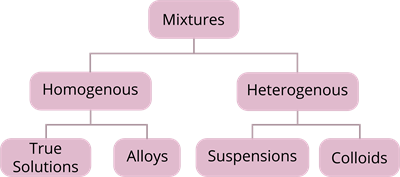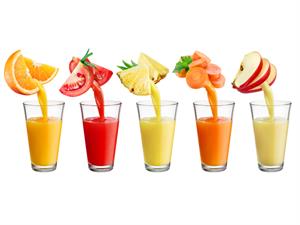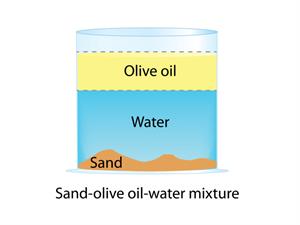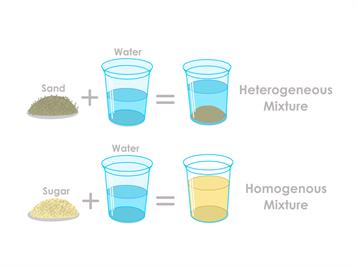PDF chapter test TRY NOW
Mixture: A mixture is a substance made of two or more elements or compounds or both, physically mixed in any ratio.
Example:
Sand water
Oil in water
Chalk in water
Sugar solution
Saltwater
Fruit juice
Oil in water
Chalk in water
Sugar solution
Saltwater
Fruit juice
The majority of the substances we consume on a daily basis are mixtures. In certain cases, we will be able to see the components with our naked eyes, but in the majority of cases, the various components will be hidden.
Based on this, the following classifications can be made:

Let us now see what a homogeneous and heterogeneous mixture is:
Homogeneous mixture: Homogeneous mixtures are made up of components of the same type.

Single phase solution
- Mixture's components are blended evenly.
- There are no visible separate barriers.
- It is just a single-phase solution.
Example:
Tap water, milk, air, ice cream, sugar syrup, ink, steel, bronze and salt solution
Heterogeneous mixture: Heterogeneous mixtures are those that contain a variety of components.

Two or more phase
- Mixture's components are not evenly distributed.
- There are noticeable separate lines.
- There is two or more phase in the solution.
In a heterogeneous mixture, components are visible to the naked eye. And, it does not have a uniform composition and properties.
Example:
Sand water
Oil in water
Chalk in water
Oil in water
Chalk in water
Experiment to prove heterogeneous mixture:
- Step 1: Take some water and oil in a vessel. Stir it well.
- Step 2: Get some sand and mix it in the water.
Result: You can see that the sand in the water and the oil in the water are not so mixed well. So, these kinds of mixtures with uneven compounds are known as heterogeneous mixtures.

Difference between a homogeneous and heterogeneous mixture
Experiment to prove homogeneous mixture:
- Step 1: Take some water in a bowl.
- Step 2: Add any compound in that water, such as sugar or salt.
- Step 3: Mix the water with sugar or salt uniformly.
Result: Now, the obtained solution is the homogenous mixture. Homogenous mixtures are made by mixing any two or more compounds in the same proportions.
